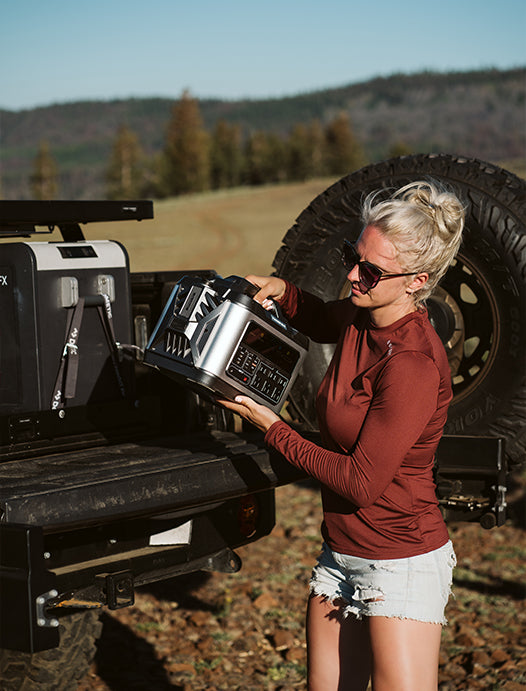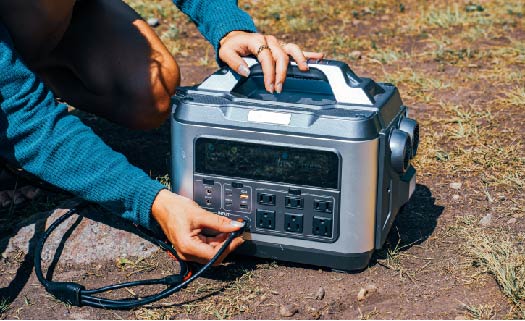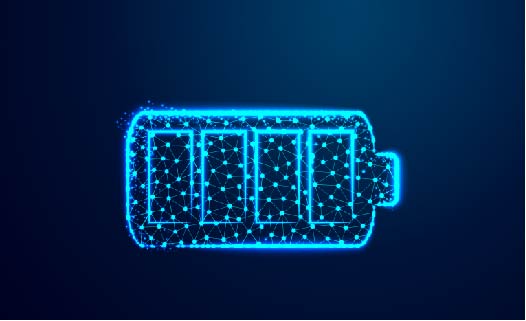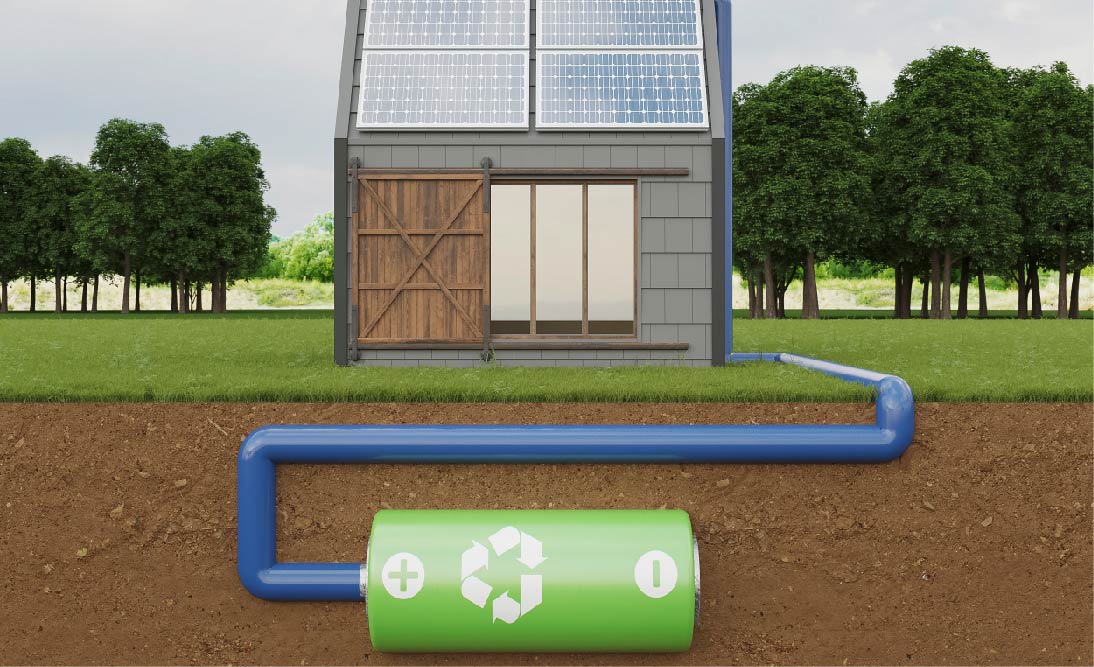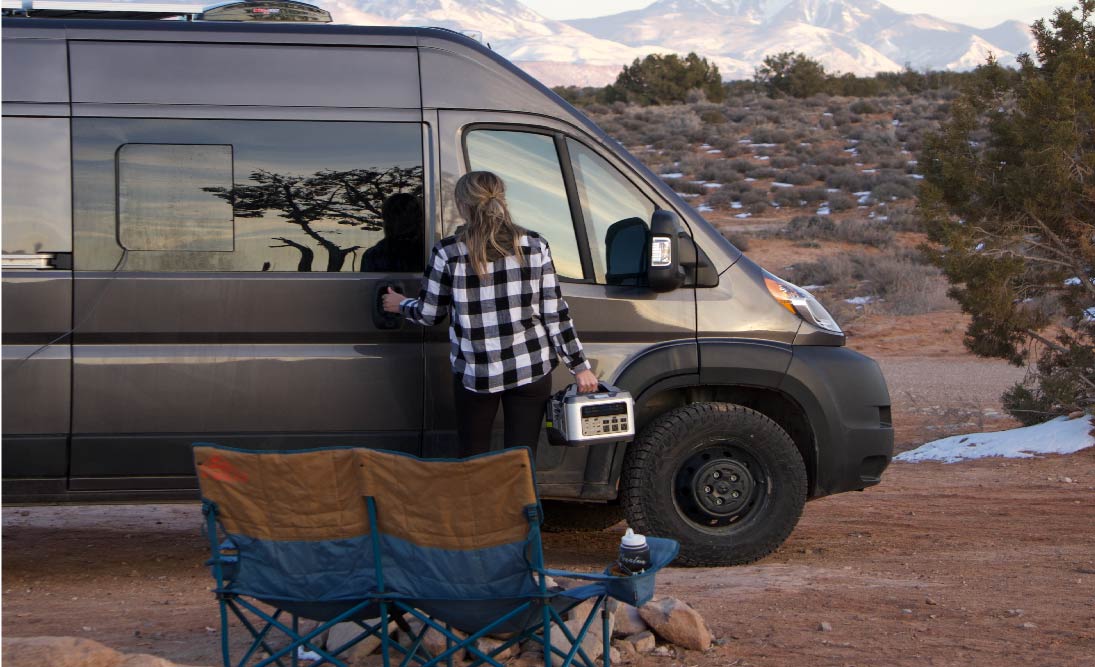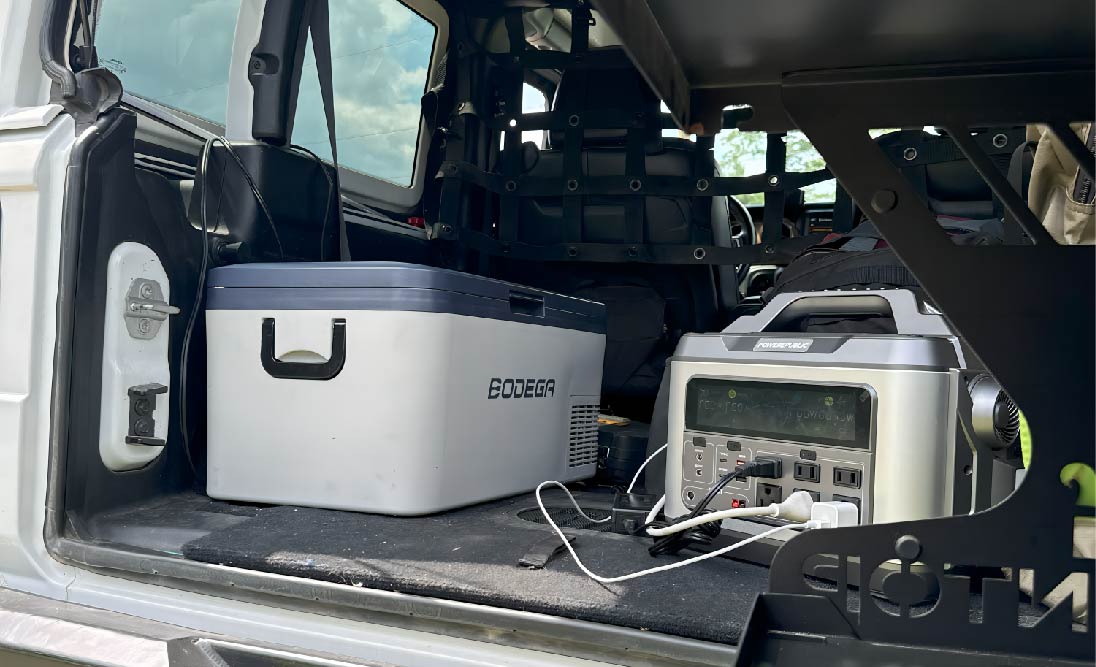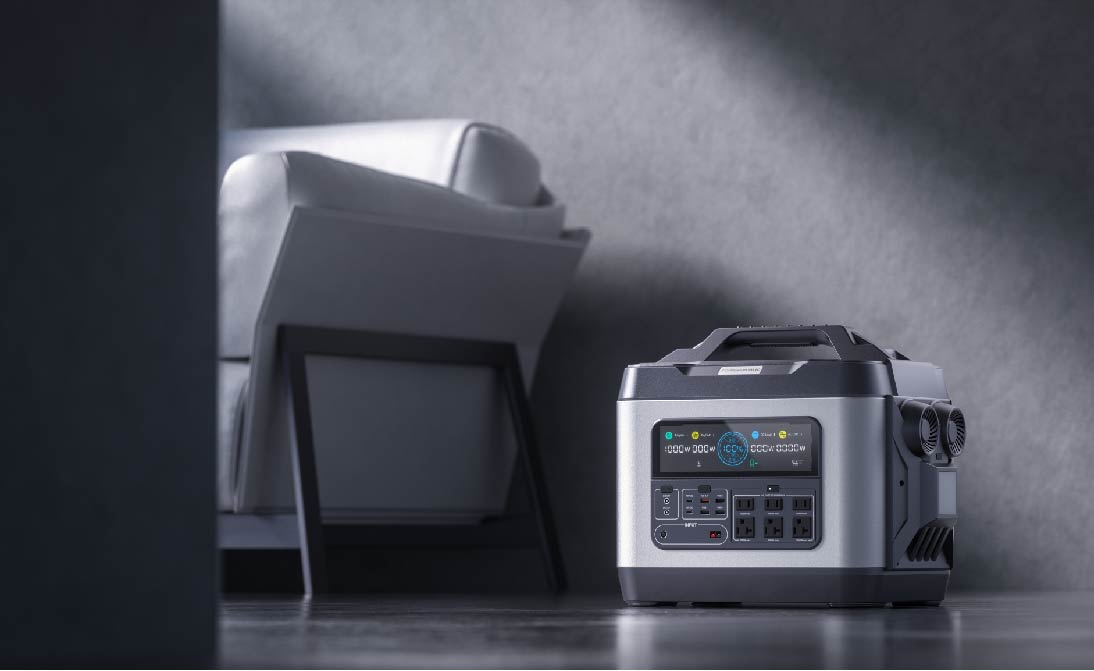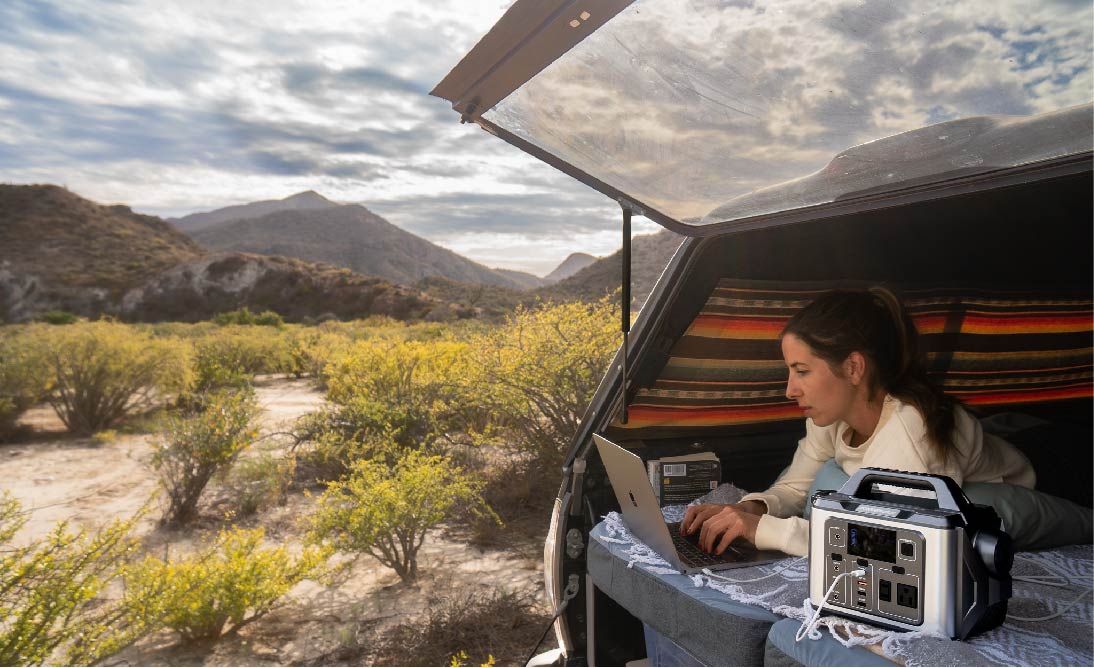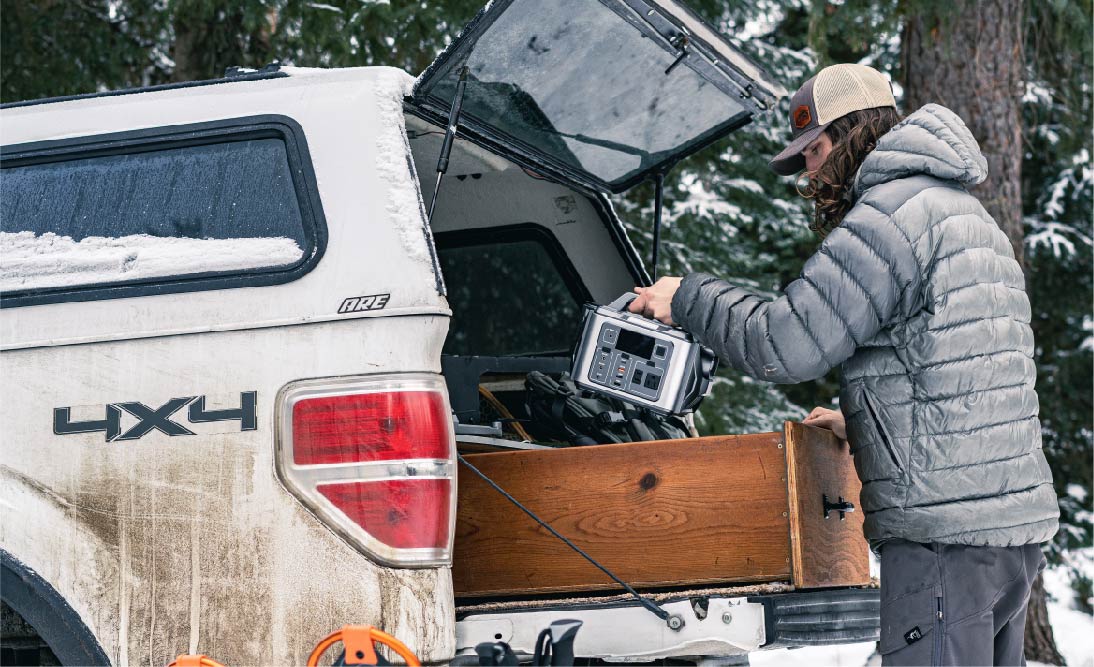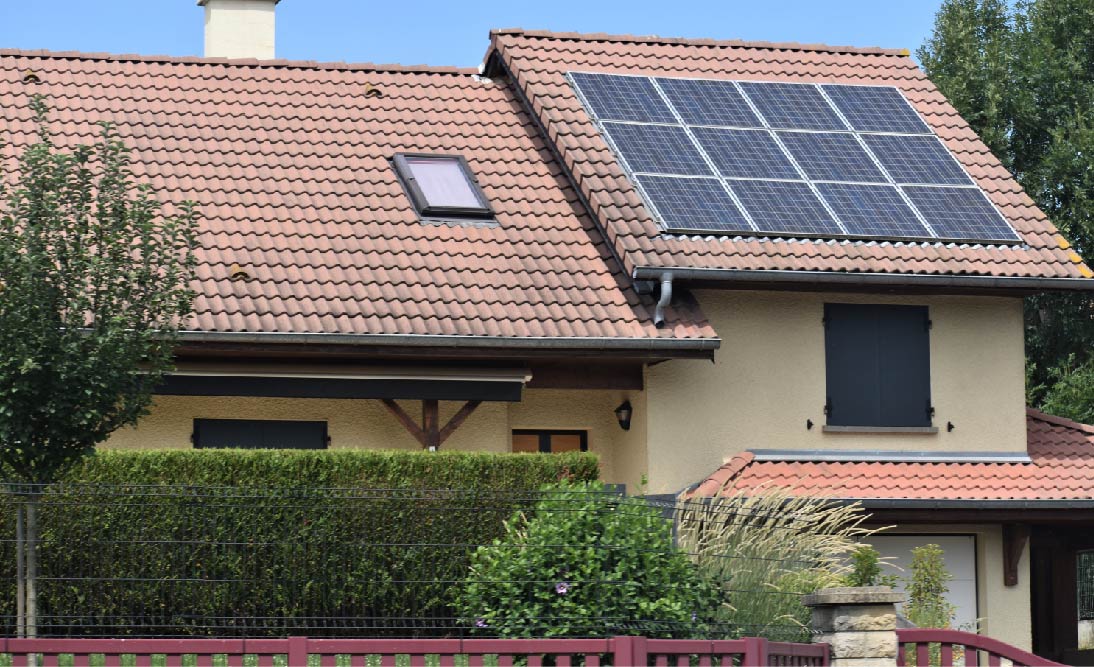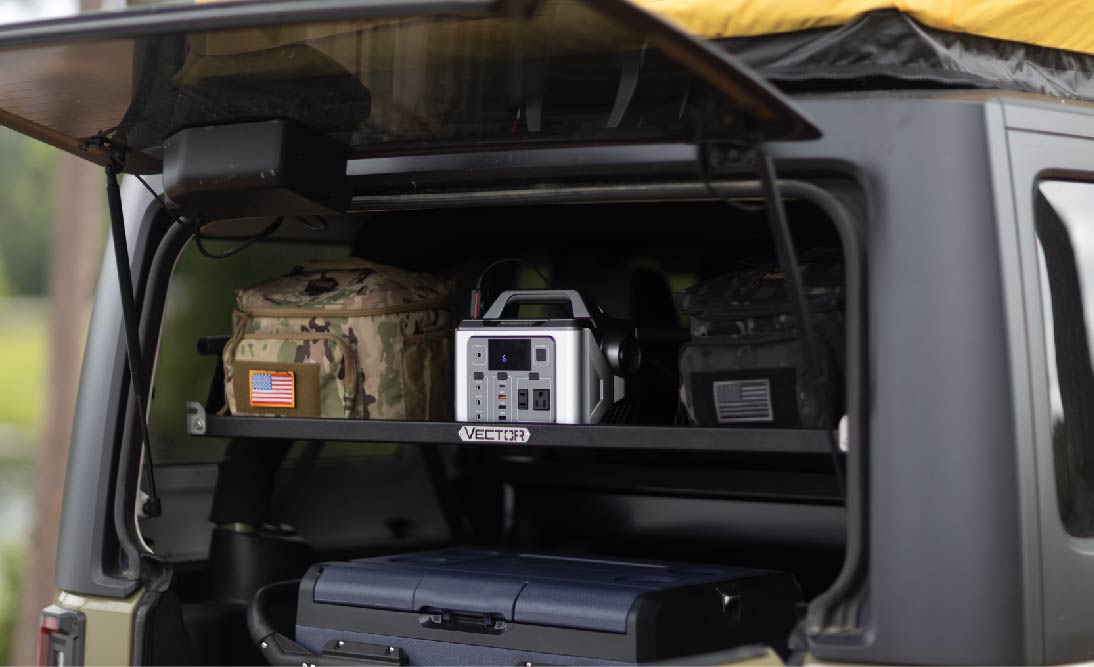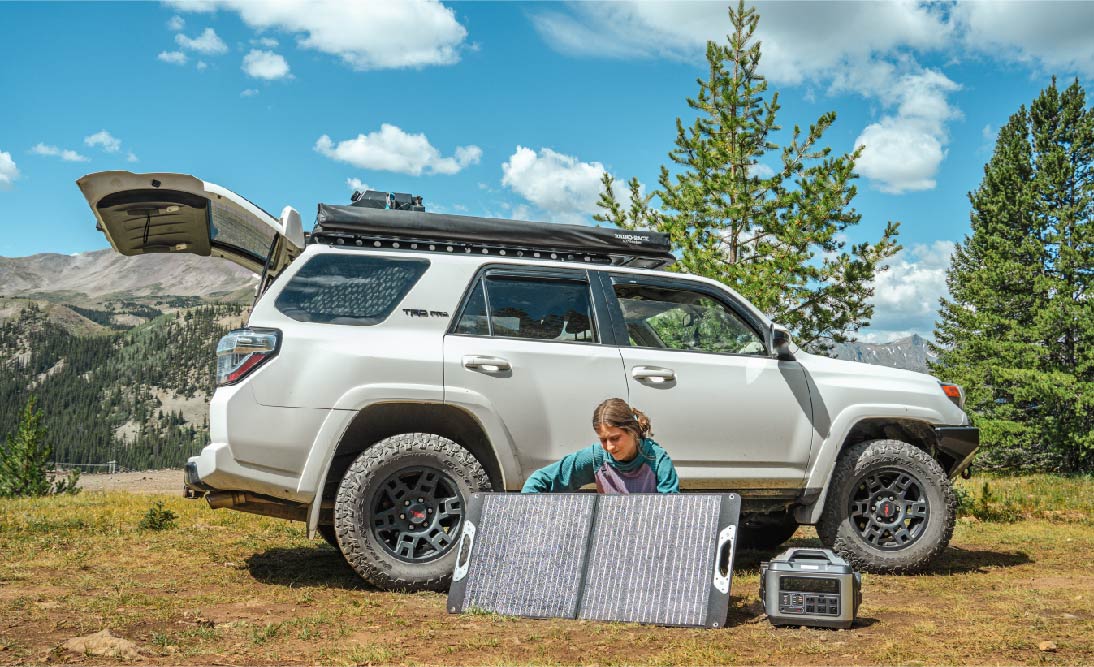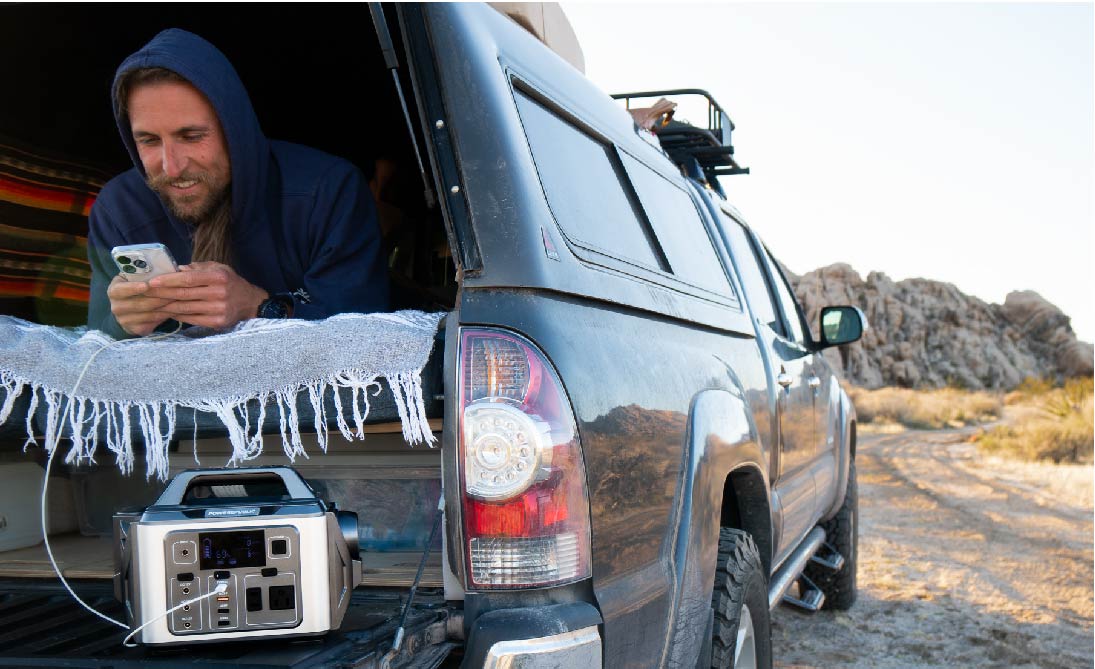Table of Contents:
Venturing into the great outdoors often means leaving the comforts and conveniences of modern life behind, including reliable access to power. This poses a significant challenge for campers and outdoor enthusiasts who rely on electronic devices for navigation, communication, or leisure. Enter the solar generator: a game-changer for off-grid adventures. These portable, eco-friendly devices harness the power of the sun to keep your gadgets charged and ready. However, selecting the right solar generator for camping isn't straightforward. It involves understanding your specific power needs, battery capacity, solar efficiency, and balancing these with concerns about portability and cost.
This guide delves into the intricate world of solar generators, offering insights on how to choose the best one for your outdoor escapades, whether it's for a casual weekend getaway or a more extended foray into the wilderness. With a focus on the POWEREPUBLIC range and detailed FAQs, we'll navigate the complexities of off-grid power solutions, ensuring you make an informed decision for your next outdoor adventure.
Solar Generator Overview

What are Solar Generators?
Solar generators are portable devices that convert solar energy into electrical power. They are an eco-friendly alternative to traditional fuel-powered generators. Unlike conventional generators that rely on gasoline or diesel, solar generators harness energy from the sun. This makes them an excellent choice for camping, RVs, outdoor events, and emergency power backups.
How Do Solar Generators Work?
-
Solar Panel Collection: The process begins with solar panels, the primary component of a solar generator. These panels contain photovoltaic (PV) cells. When sunlight hits these PV cells, it creates an electric field, generating direct current (DC) electricity.
-
Conversion to Usable Electricity: The DC electricity generated by the solar panels isn't directly usable by most appliances, which run on alternating current (AC). Therefore, the solar generator uses an inverter to convert the DC electricity into AC electricity.
-
Energy Storage: The electricity generated by the solar panels can be used immediately or stored for later use. Solar generators come equipped with batteries—usually lithium-ion or lead-acid batteries—that store the electrical energy. The stored power can be used when there's no sunlight like at night or on cloudy days.
-
Power Distribution: Once the energy is stored in the batteries and converted to AC, it can be distributed to various devices and appliances through the generator's outlets. Modern solar generators often have multiple output options, including standard AC outlets, USB ports, and sometimes 12V car chargers.
Key Advantages:
-
Eco-Friendly: Solar generators produce clean energy without emitting harmful pollutants.
-
Quiet Operation: Unlike fuel-powered generators, they operate quietly, making them ideal for camping and residential use.
-
Low Maintenance: They require minimal maintenance as there are no moving parts like in traditional generators.
-
Renewable Energy Source: They rely on sunlight, an abundant and renewable energy source.
Limitations:
-
Weather Dependent: Their efficiency can be significantly affected by weather conditions.
-
Energy Storage Capacity: The amount of power they can store is limited by the size and capacity of their batteries.
-
Initial Cost: The upfront cost of a solar generator, particularly higher capacity models, can be relatively high compared to traditional generators.
Applications
-
Residential Backup Power: For homes to provide power during outages.
-
Outdoor Recreational Activities: Ideal for camping, RVs, and outdoor events where power is needed.
-
Remote Areas: Useful in remote areas where grid electricity is not available.
In summary, solar generators are a sustainable and versatile solution for various power needs, ranging from emergency backup to daily power usage in off-grid situations. Their increasing efficiency and decreasing costs are making them a more viable option for a wider range of users.
How To Choose The Best Solar Generator For Camping

Choosing the best solar generator for camping involves considering several key factors and understanding how these factors affect your power needs. Here’s a guide to help you select the right solar generator, along with some calculations and examples:
1. Know Your Power Needs
First, determine the power requirements for your camping trip. List out all the electronic devices you plan to use, such as smartphones, laptops, lights, cameras, or small appliances, and note their power consumption, usually given in watts (W).
Example Calculation:
-
Smartphone: 5W
-
Laptop: 60W
-
LED Camping Light: 10W
-
Camera Battery Charger: 15W
-
Total Power Consumption = 5W + 60W + 10W + 15W = 90W
2. Consider Battery Capacity
Battery capacity, measured in watt-hours (Wh), determines how long the generator can power your devices. Choose a solar generator with a battery capacity that exceeds your total daily power requirement.
Example:
-
Total Power Consumption (from above) = 90W
-
Estimated Usage Time per Day = 5 hours
-
Daily Power Requirement = 90W * 5 hours = 450Wh
-
Choose a solar generator with more than 450Wh capacity to cover your daily needs.
3. Look at Solar Panel Efficiency and Size
The efficiency of solar panels determines how quickly the generator can be recharged. Higher efficiency and larger size panels will charge the battery faster, but they are also bulkier and more expensive.
Example:
-
If your generator has a 500Wh battery and you’re using a 100W solar panel with an average of 5 hours of peak sunlight per day.
-
Charging Time=Battery Capacity / (Solar Panel Power * Peak Sunlight Hours)=500Wh / (100W * 5 hours) = 1 day
4. Portability
For camping, portability is crucial. Consider the weight and size of the generator, especially if you plan to hike to your camping location.
5. Extra Features
Look for additional features like multiple outputs (USB, AC outlets), LED displays, and weather-resistant construction.
6. Budget
Balance your power needs with your budget. Higher capacity and efficiency often come at a higher cost.
7. Example Scenario:
-
Power Requirement: 450Wh per day.
-
Ideal Solar Generator: A model with at least 500Wh battery capacity.
-
Solar Panels: A 100W solar panel for efficient charging.
-
Portability: Lightweight and compact design for easy transport.
-
Budget: Mid-range price with essential features.
By understanding your power needs, considering the efficiency and capacity of solar generators, and factoring in portability and budget, you can choose the best solar generator for your camping needs. It's always a good idea to have a little extra capacity than your calculations to accommodate for variables like weather conditions and additional power usage.
Best Solar Generator For Camping - POWEREPUBLIC

Selecting the best solar generator for camping requires a full understanding of your power needs, operating time, budget, and other factors. POWEREPUBLIC offers three durable and long-lasting solar generator kits for camping: the T306+PV100, T1200+PV100, and T1200+PV200. We recommend these three combinations because they are not only portable but also powerful enough to keep all your essential items charged while camping, without being too heavy.
To better understand the portability and functionality of these models, let’s take a look at the table below:
|
Models |
Features |
Est.Duration(hours) |
|
300W/296Wh, 600W Surge Power 10 Different Output Ports Lithium-ion Batteries LED Light On the Back Less than 10 Pounds 120W Max Solar Input |
Smartphone Charger(5-10W): 25 to 50 hours LED Camping Light(10-20W): 12.5 to 25 hours Portable Fan(20-50W): 5 to 12.5 hours Laptop Charger(45-85W): 3 to 5.5 hours Portable Fridge/Mini Cooler(40-100W): 2.5 to 6 hours Portable Electric Grill(1000-1500W): Not Applicable Coffee Maker(600-1200W): Not Applicable Radio or Portable Speaker(5-20W): 12.5 to 50 hours Camera Battery Charger(10-20W): 12.5 to 25 hours Portable Projector(50-200W): 1 to 5 hours |
|
|
POWEREPUBLIC T1200+PV100 & T1200+PV200 Solar Generator Kits |
1200W/1110Wh, 2600W Surge Power 13 Different Output Ports Lithium-ion Batteries User-Friendly LCD Screen LED Light On the Side 230W Max. Solar Input |
Smartphone Charger(5-10W): 94 to 188 hours LED Camping Light(10-20W): 47 to 94 hours Portable Fan(20-50W): 18 to 47 hours Laptop Charger(45-85W): 11 to 21 hours Portable Fridge/Mini Cooler(40-100W): 9.5 to 23.5 hours Portable Electric Grill(1000-1500W): 0.5 to 1 hour Coffee Maker(600-1200W): 0.5 to 1.5 hours Radio or Portable Speaker(5-20W): 47 to 188 hours Camera Battery Charger(10-20W): 47 to 94 hours Portable Projector(50-200W): 4.5 to 18.5 hours |
-
Duration(hours)=Capacity(Wh) * 0.85 / Power Of the Device(W)
FAQ I: How Much is a Solar Generator?

The cost of a solar generator varies widely depending on its capacity, quality, brand and included features. Here's a rough breakdown:
-
Small, Portable Solar Generators (100-500W): These range from $100 to $500. They are suitable for charging small devices like smartphones, cameras, or laptops.
-
Mid-Size Solar Generators (500-1500W): Prices for these generators typically fall between $500 and $1,500. They can power larger devices, such as mini-fridges or TVs.
-
Large Solar Generators (1500W+): These can cost anywhere from $1,500 to $5,000 or more. They are capable of powering several appliances and are suitable for home backup or extensive outdoor use.
Example: A 1000W solar generator with a decent battery capacity and efficient solar panels could cost around $1,000-$1,200.
FAQ II: Are Solar Generators Worth The Money?

Whether a solar generator is worth the investment depends on your specific needs and circumstances. Here are some considerations:
-
Eco-Friendly: Solar generators are environmentally friendly, using renewable energy.
-
Long-Term Savings: They can offer long-term savings on fuel costs compared to gas generators.
-
Maintenance and Operation Costs: Solar generators have lower maintenance and operation costs.
-
Noise and Safety: They operate silently and don’t produce harmful emissions.
Calculation Example for Long-Term Savings:
-
Assume a gas generator costs $0.75 per kWh to operate and a solar generator has no operating cost.
-
If you use a generator for 500 hours a year, a gas generator would cost $375 annually (500 hours * $0.75/kWh).
-
Over 10 years, that's $3,750 in fuel costs, not including maintenance and the cost of the generator itself.
FAQ III: How to Build a Solar Generator?

Building a solar generator involves several key components and steps. Here's a detailed guide, along with examples and calculations to help you understand the process:
Components of a Solar Generator:
-
Solar Panels: Capture sunlight and convert it into electricity.
-
Charge Controller: Regulates the voltage and current coming from the solar panels to the battery.
-
Battery: Stores the electricity generated by the solar panels.
-
Inverter: Converts the DC electricity stored in the battery into AC electricity for use with standard appliances.
-
Cables and Connectors: Used to connect all components.
Steps to Build a Solar Generator:
Determine Power Requirements:
-
List all the devices you want to power (e.g., a 40W light bulb, a 500W fridge).
-
Calculate the total wattage needed (e.g., 40W + 500W = 540W).
-
Consider peak and continuous power requirements.
Select Solar Panels:
-
Calculate the total power generation needed per day (e.g., 540W for 5 hours = 2700Wh).
-
Choose solar panels based on your daily watt-hour requirement.
-
For example, if a solar panel produces 300W, you’ll need about 9 hours of sunlight (2700Wh ÷ 300W) to meet your daily requirement.
Choose a Battery:
-
The battery should store enough power for your needs.
-
Calculate the battery capacity required using Watt-hours (Wh).
-
For a 2700Wh requirement, a 12V battery needs a capacity of 225Ah (2700Wh ÷ 12V).
Select a Charge Controller:
-
The charge controller should match the voltage of the solar panels and battery.
-
Ensure it can handle the current from your solar panels.
-
For a 300W, 12V solar panel, a charge controller with at least 25A is recommended (300W ÷ 12V).
Choose an Inverter:
-
The inverter should be able to handle the total wattage of your appliances.
-
For 540W of appliances, a 600W inverter is suitable.
-
Ensure it matches the battery's voltage (e.g., 12V).
Assemble the System:
-
Connect solar panels to the charge controller.
-
Connect the charge controller to the battery.
-
Connect the battery to the inverter.
-
Ensure all connections are secure and use proper cables and connectors.
Safety and Protection:
-
Install fuses or circuit breakers for safety.
-
Consider a battery management system for lithium batteries.
-
Ensure the system is grounded.
Testing:
-
Check all connections.
-
Test the system with a multimeter.
-
Initially, power smaller devices to test the setup.
Example Calculation:
-
Appliance Power Needs: 540W
-
Daily Usage: 5 hours
-
Daily Energy Needs: 540W × 5h = 2700Wh
-
Solar Panel: 300W (needs about 9 hours of sunlight)
-
Battery Capacity: 2700Wh / 12V = 225Ah
-
Charge Controller: At least 25A for a 300W, 12V panel
-
Inverter: 600W to cover 540W of appliances
Remember, this is a basic guideline. The actual design might vary based on specific needs, geographic location, and solar irradiance in your area. Additionally, regular maintenance and monitoring are crucial for the efficient operation of your solar generator.
Final Thoughts
In conclusion, when selecting the best solar generator for camping, it's essential to consider factors like power needs, battery capacity, solar panel efficiency, portability, additional features, and budget. Solar generators, like those offered by POWEREPUBLIC, provide a sustainable and eco-friendly power source, ideal for outdoor enthusiasts. They offer the advantage of being low-maintenance, quiet, and cost-effective long-term. Building your solar generator, as outlined in the guide, can be a rewarding project, but requires careful consideration of components like solar panels, batteries, charge controllers, and inverters.
With the increasing efficiency and decreasing costs of solar technology, a solar generator is a wise investment for anyone seeking a reliable power source while enjoying the great outdoors. Remember, the best solar generator for camping is one that meets your specific power needs while being easy to transport and use, ensuring a seamless and enjoyable camping experience.
